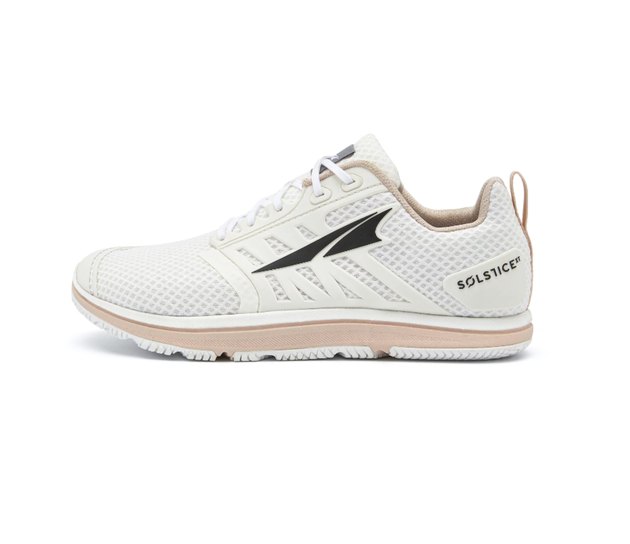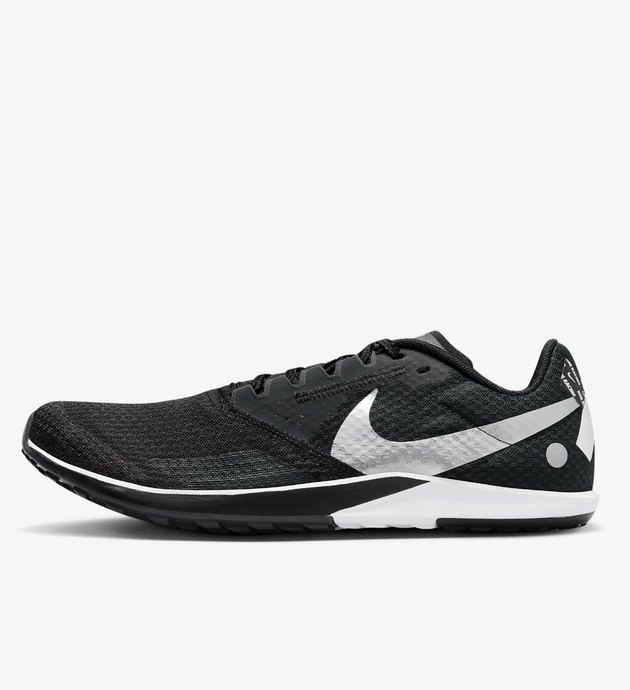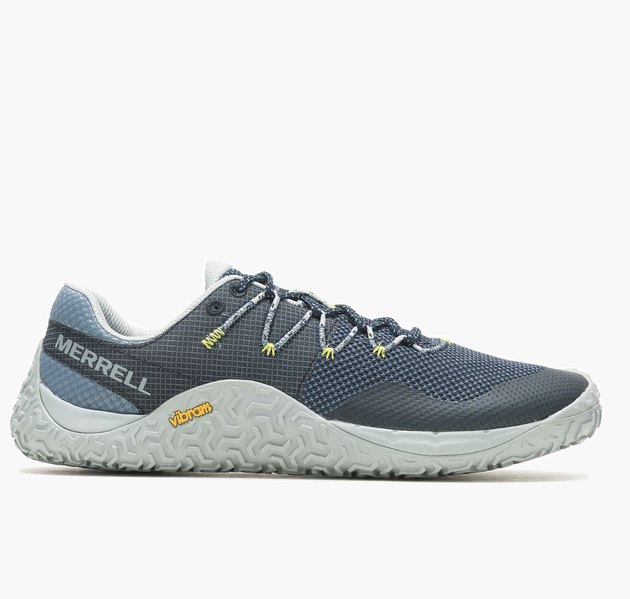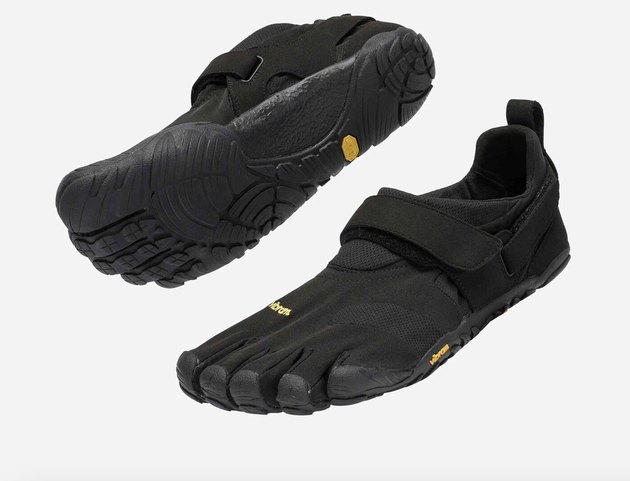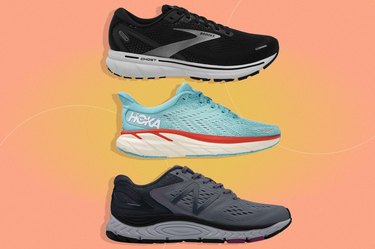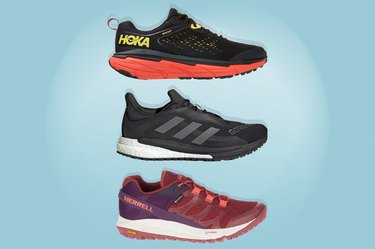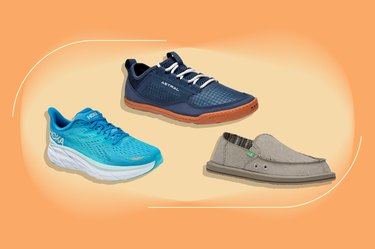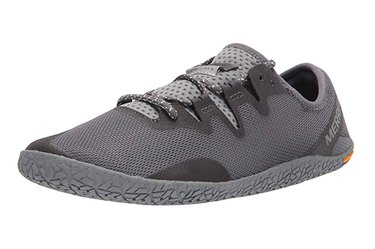
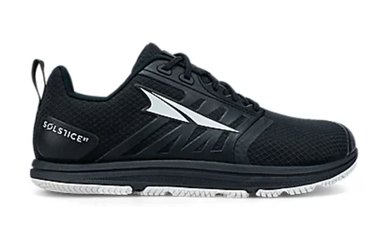
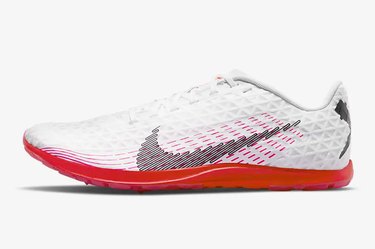
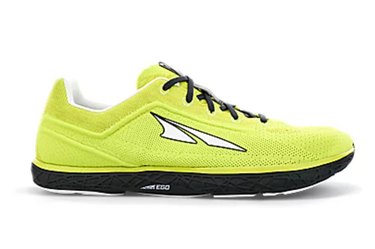
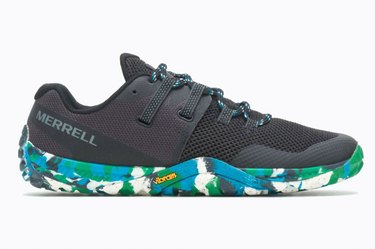

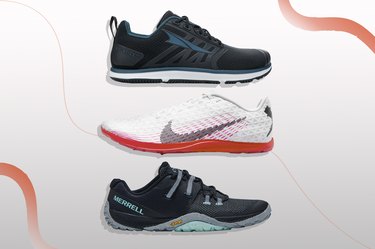

Less is more. It's a saying you've heard before and a principle that some firmly believe is best when it comes to running footwear.
The best minimalist running shoes (aka barefoot running shoes) balance this concept with important features — like a substantially sized toe box, ultra low-profile foam cushioning and rubber lugs on the soles — to make sure your feet are protected over many miles.
Video of the Day
Video of the Day
The minimalist shoe movement really picked up over the last 10 years or so, garnering a lot of attention through brands like Vibram (think: their signature Five Fingers) and Altra — complete with their foot-shaped toe box.
Now, most running sneaker brands offer some sort of minimalist shoe for people who prefer them over traditional running sneakers.
To help make shopping for minimalist running shoes easier, we connected with run coaches to highlight the six best minimalist, zero-drop running shoes of 2024.
Our Picks
- Best Value: Merrell Vapor Glove 6 ($79.99+, Merrell)
- Best for Multi-Tasking: Altra Solstice XT 2 ($130, Altra)
- Best for Track: Nike Rival Waffle 6 ($52.97+, Nike)
- Best for Road: Altra Escalante 3 ($130, Altra.com)
- Best for Trail: Merrell Trail Glove 7 ($83.99+, Merrell)
- Best Lightweight: Vibram KMD Sport 2.0 ($62.50+, Vibram)
How We Chose
We talked to three running coaches and personal trainers about their top recommendations and what to look for in the best minimalist running shoes. We selected and tested these products based on their criteria. You can learn more about how we cover products here.
- Comfort
- Weight
- Toe-box size
- Terrain-specific features
A Quick Language Note
We make deliberate choices about the language we use when it comes to sex and gender. But most manufacturers typically market shoes according to gender, so we have listed both women's and men's picks below.
The main differences between most women's and men's shoes are width and size. In some cases, men's shoes are built to support greater weights, so people with bigger bodies may want to try men's versions, while people with smaller bodies may prefer women's versions.
1. Best Value: Merrell Vapor Glove 6
- Weight: 4.59 ounces (men's and women's)
- Heel-to-Toe Drop: 0 mm
2. Best for Multi-Tasking: Altra Solstice XT 2
- Weight: 10 ounces (men's), 8.3 ounces (women's)
- Heel-to-Toe Drop: 0 mm
3. Best for the Track: Nike Rival Waffle 6
- Weight: 4.6 ounces (men's and women's)
- Heel-to-Toe Drop: 0 mm
4. Best for Road: Altra Escalante 3
- Weight: 9.3 ounces (men's), 7.7 ounces (women's)
- Heel-to-Toe Drop: 0 mm
5. Best for Trail: Merrell Trail Glove 7
- Weight: 8.99 ounces (men's), 7.23 ounces (women's)
- Heel-to-Toe Drop: 0 mm
6. Best Lightweight: Vibram KMD Sport 2.0
- Weight: 5.82 ounces (men's), 4.71 ounces (women's)
- Heel-to-Toe Drop: 0 mm
4 Things to Look for When Shopping Minimalist or Barefoot Running Shoes
Just like traditional running sneakers, there are many different types of minimalist shoes with different attributes. Here, experts explain what to look for when purchasing your next pair of minimalist sneakers.
1. Comfort
"You want a shoe that feels good," Somers says. "More important than whether or not it's minimalist or whether it caters to a specific gait, is how it feels on your foot. If the shoe doesn't feel right before you even get out there, that's a red flag."
Science agrees. According to a July 2015 study published in the British Journal of Sports Medicine, the shoes you find the most comfortable from the get-go may be the best when it comes to preventing injury. We're all built differently, so what feels best on you will likely be different than someone else.
2. Weight
As one would infer from the category, generally speaking, a minimalist shoe is going to feel lighter on your foot without a lot of bulk.
"This lighter feel can help runners move faster, which is a big reason why the sneakers grew in popularity," Somers says.
Of note, lightweight shoes and minimalist shoes aren't necessarily one and the same. Thanks to all sorts of new foams, brands have been able to make sneakers with significant stack heights that weigh next to nothing.
3. Toe-Box Size
This can be a preference, for sure, but Sapper says that a wider toe box could help runners stave off injury in the long haul.
"Our feet naturally expand when we run, so we want plenty of width in that area," she says.
4. Terrain-Specific Features
The surface and the purpose of the run are important considerations when determining which minimalist shoe is best for a particular type of workout.
"When running on trails, look for a minimalist shoe that offers more traction," Lisa Levin, RRCA-certified run coach and co-founder of private coaching service Run Farther & Faster, tells LIVESTRONG.com.
Minimalist trail-running shoes typically include lugs on the soles made of sturdy, slip-resistant rubber. If you're just running on roads, this isn't as important, and maybe you'd rather prioritize comfort and weight.
What Are Minimalist Running Shoes?
Loosely put, minimalist running shoes are any sneakers that lack significant stability or cushioning, Levin says.
"Without both of those things, the heel and forefoot are essentially at the same height," she says. "Minimalist running shoes generally have a heel drop range of zero — often referred to as barefoot running shoes — to 8 mm." Traditional running sneakers range between a 10 to 12 millimeter drop.
Zero-drop running shoes don't have to mean zero cushioning. Over the past few years, more and more brands have expanded their lines to include zero-drop options with higher stack heights — the amount of material (often cushioning) between the runner and the ground. Which means you can find barefoot running shoe options with some cushioning and other options with absolutely none.
Are Minimalist Running Shoes Better Than Normal Running Shoes?
So, why might someone opt for minimalist running shoes over traditional running sneakers? The thought process is that minimalist shoes allow runners to strengthen the muscles within their feet, which may reduce injury.
One September 2021 study published in Scientific Reports found that wearing minimalist footwear during daily activities for six months increased foot strength by 57 percent. Another August 2018 study published in European Journal of Sport Science found that when runners gradually incorporated minimalist options into their training over the course of 26 weeks, their feet got stronger. The jury's out on whether or not that translates to fewer overuse injuries.
Ultimately, some people prefer low or zero drop and like how lightweight barefoot shoes are. And the best running shoes really are the ones that fit well and feel good on your feet.
How to Use Minimalist Running Shoes Safely
"In theory, we all should be able to run in a shoe that allows our feet to perform in their most natural state," Sapper says. "However, most if not all of us have been walking and running in cushioned shoes for most of our lives, and as a result, the switch to a minimalist shoe, even if gradual, could cause significant injury, particularly because minimalist running shoes, due to the low heel drop, increases the load on the achilles tendon."
Levin agrees low-profile running shoes can be a great tool in a runner's toolbox, but that each runner should gradually lean into them.
"Regardless of the workout, ease into your minimalist shoes. For example, when running a track workout, use the minimalist running shoes for the warm-up and then switch into more cushioned shoes for the workout."
Just like with anything new, it will take some use to get used to wearing barefoot-style sneakers. However, with time, you may be surprised just how comfortable you get with the lightweight picks, incorporating them into your rotation more regularly.
- Footwear Science: "Daily activity in minimal footwear increases foot strength"
- European Journal of Sport Science: "Longer-term effects of minimalist shoes on running performance, strength and bone density: A 20-week follow-up study"
- The American Journal of Sports Medicine: "Influence of the Heel-to-Toe Drop of Standard Cushioned Running Shoes on Injury Risk in Leisure-Time Runners: A Randomized Controlled Trial With 6-Month Follow-up"
- Scientific Reports: "Daily activity in minimal footwear increases foot strength"

